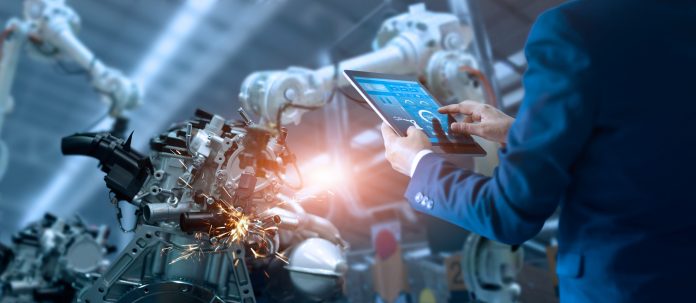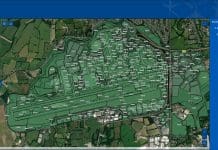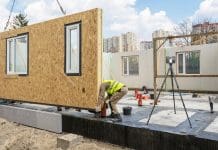Finbarr McMeel, technical director at Gilbert-Ash, takes a look at the ConTech trends expected to sweep the nation in 2020
The construction industry is in a time of unprecedented change.
The advancement in ConTech solutions has been transformational in how we go about our business and I believe we are only at the beginning of this exciting journey. For example, the advancements in robotics are gaining traction and have the potential to be industry-changing.
Working as one with experienced teams, new technology is delivering breakthroughs in efficiency and productivity, as well as safety.
While some find this brave new world intimidating, Gilbert-Ash is taking on niche projects which require vision and innovation to succeed.
Projects demonstrating ConTech solutions
One of our recent projects which showcases how we embrace ConTech is the Diplomatic Teaching Academy (Mayhew Theatre) in the Foreign & Commonwealth Office in London, which won a 2019 Construction Excellence Award.
We had to operate within tight, sensitive spaces while completing a highly modern building with very strict geometrical design specifications. Everything had to be meticulously thought out off-site by using geospatial construction methods.
We invested in an imaging laser scanner which allowed us to scan the superstructure to determine precise dimensions.
The point cloud data captured by the laser enabled our team to begin their entire design process with precision, ensuring accuracy during every step of construction.
2020 technology trends for the construction industry
Geospatial Technology
Geospatial Technology is already proving very beneficial for us, but the possibilities are endless, especially when you look to the future of Smart Cities and the Internet of Things. The ability to deliver data, aiding planning and delivery of projects, is phenomenal.
BIM
BIM transformed the industry, taking it from the world of 2D modelling into a truly digital space. Looking to 2020 we forecast further developments in the world of Augmented Reality, Virtual Reality, geospatial and mixed reality. There really are some exciting breakthroughs taking place.
Augmented reality
As a very simple example, the Ikea Place app allows customers to use Augmented Reality to see how certain pieces of furniture will look in their home. In the construction industry, this technology allows for design choices to be considered, adapted and finalised. The Bridge Engine app, which delivers mixed reality and positional tracking, will further bring detailed construction plans to life.
Acoustics Simulators
Digital construction has got to the point where we can, not only, create a virtual representation of designs but with Acoustics Simulators you can also experience the sound which would be generated in the physically constructed building.
The acoustics of a new building can be extremely important especially in the likes of office spaces or theatres. The materials used and the geometry of the building will all have an impact on sound. It can be vitally important that the level of noise bleed from a room is not above expectations.
Modern room acoustics software will lay sound impulses over the building design creating an acoustic signature of any space. There are big developments ahead with this technology with purpose-built simulation rooms which will use ambisonics – a method of creating a very high level of detail.
Immersive solutions
Immersive designs help our teams identify potential issues ahead and enables us to adapt and find solutions. It promotes collaboration with the client as they can see the designs come to life before any on-site work takes place. Crucially for our clients, it improves productivity and helps reduce costs.
But with more layers of BIM being introduced it can be cumbersome getting those plans to link together in real-time. For us a game-changer is Unity Reflect. It brings multiple BIM models with all their metadata to real-time 3D and maintains a live link between them. You can also create your own real-time BIM applications and customise the user experience by building on top of Unity Reflect.
This plug-in software for Revit allows highly-accurate and real-time work to be shared between the client, the designers and the construction teams.
Drones
I believe the use of drones on construction sites will also develop in the future. Presently they are primarily used for surveying work and monitoring, as well as inspecting hard to reach areas.
No longer do multiple teams need to be on-site to discuss issues when they can view real-time footage from drones from the comfort of their office. Drones can also provide point cloud models of an area which can be overlaid with 3D models.
In the future, we could see them being used in the delivery of materials from suppliers and then throughout the construction site which will have health and safety benefits. We could see a reduction in materials having to be manually delivered across our sites.
Generative Design
We also predict further development in the use of Generative Design. This essentially means working with machines to generate the best designs and solutions.
As motorists often let Google navigate their best route, so too do architects and construction teams. By giving a computer some design parameters, it will design the best outcome. You tell the software the results you want and with your guidance it arrives at the optimal design backed up with the data to prove it.
This type of automation in not a new thing in the industry but it is now capable of much more with deeper functionality and the ability to take on more data and analysis.
It is an exciting time for the industry, and we are passionate about using this new technology to shape our future.
Twitter: @gilbertashnews

















